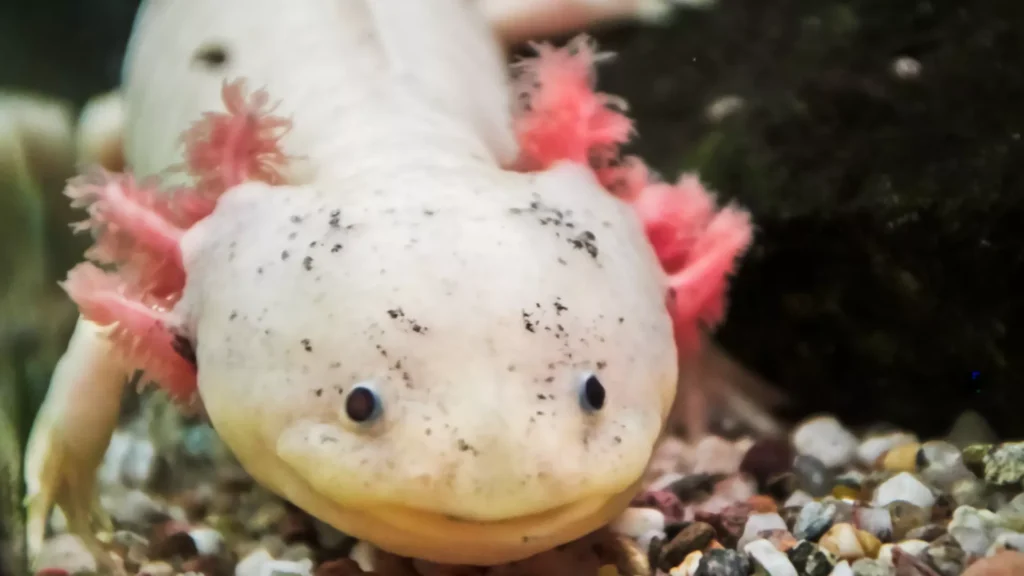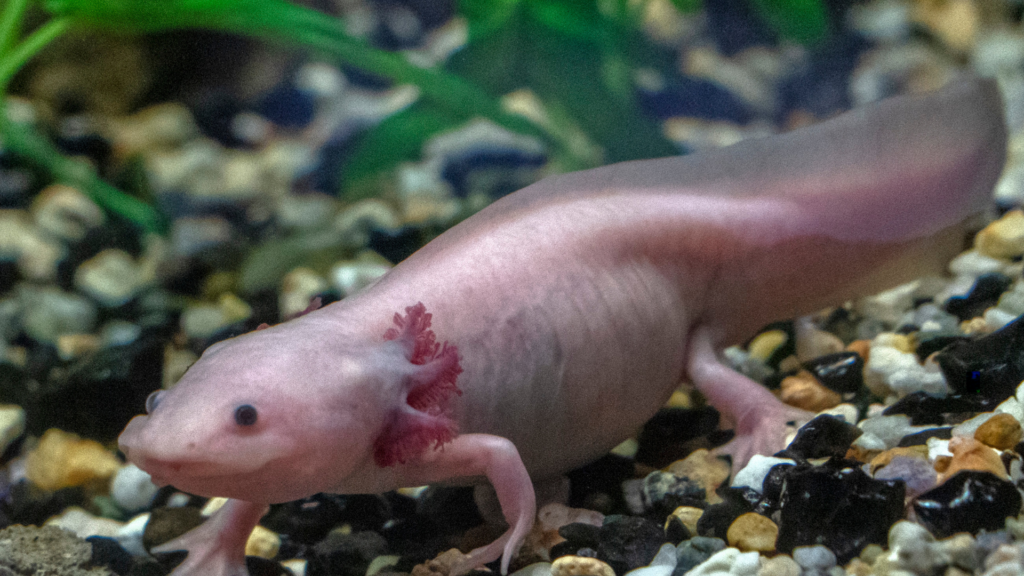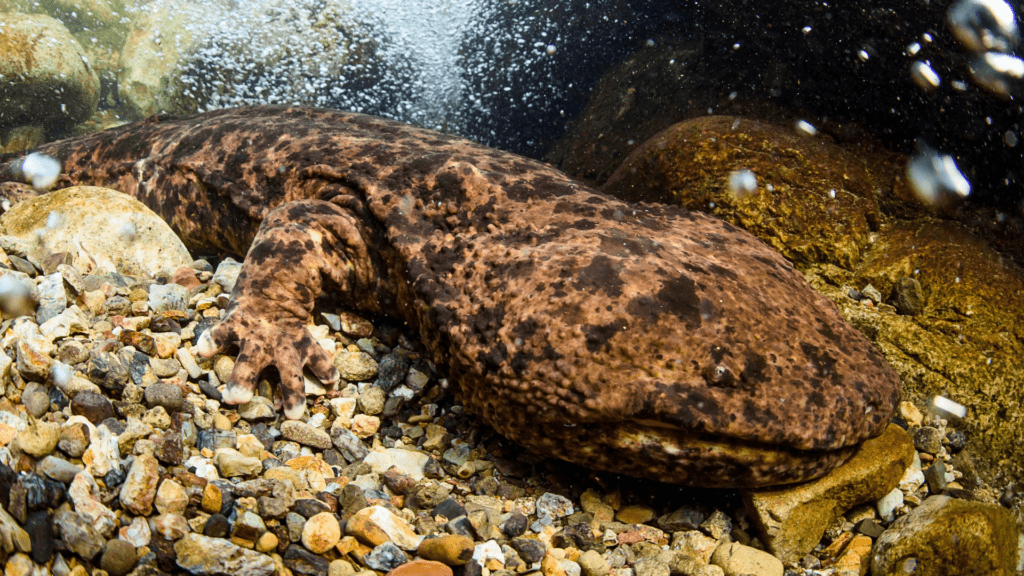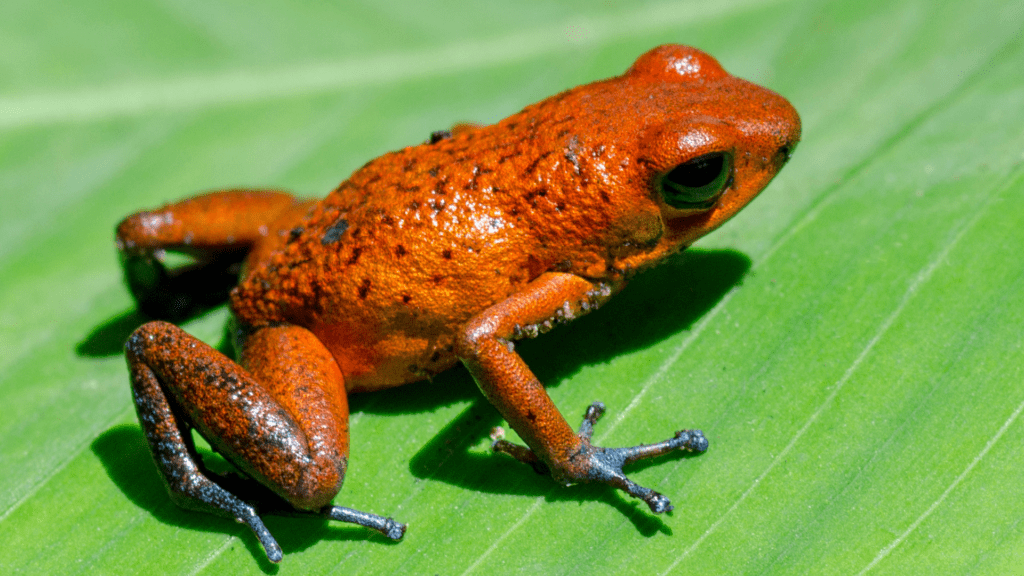The olm is a truly remarkable creature, captivating with its unique adaptations and ancient lineage. Evolving for over 190 million years, it serves as a living testament to life’s resilience on Earth. Found primarily in the subterranean waters of deep caves in the Dinar Karst region of Southern Europe, this blind, snake-like salamander intrigues scientists. Olms are social, often seen in pairs or small groups in their dark habitats. Males, especially during mating season, defend territories to attract females, displaying aggression through head-bobbing and postural changes. These confrontations rarely escalate, as the olm relies on intimidation to settle disputes.
Scientific Classification
belongs to the following scientific classification:
- Kingdom: Animalia
- Phylum: Chordata
- Class: Amphibia
- Order: Caudata
- Family: Proteidae
- Genus: Proteus
- Scientific Name: Proteus anguinus
This unique species stands out for its extraordinary adaptations to life in total darkness, reflecting a remarkable evolutionary journey. Olms possess an acute sense of smell and hearing, which compensates for their lack of vision.
It is particularly interesting to note that the olm is the sole representative of the Proteus genus and the only known cave-dwelling chordate species that is exclusive to Europe.

Description
olm is essentially a blind cave salamander, and both males and females exhibit a similar appearance, with the only notable difference being the slightly thicker cloaca (urinogenital opening) of the males. Males are typically smaller than females, a trait that adds to the intriguing diversity of this species.
- Size: The body of The unique exhibits a snakelike shape, generally measuring between 20 to 30 centimeters in length, with some individuals reaching up to 40 centimeters.
- Color: The outer skin of The fascinating amphibian is predominantly yellowish-white or pink, attributed to a small amount of the pigment riboflavin. Interestingly, the abdominal region is transparent, allowing visibility of the internal organs. This coloration has led to The unique being nicknamed ‘human fish’ due to its resemblance to the pale skin of certain human populations. The skin darkens when exposed to light, a response due to the production of melanin.

Anatomical Features:
Head:
olm has a pear-shaped head with a rounded snout. A small mouth houses tiny teeth that form a sieve-like structure, enabling it to trap larger food particles.
Eyes:
Their eyes are rudimentary and covered by a thin layer of skin, rendering them effectively blind.
Gills:
A distinctive feature of The unique is its external gills—three pink gills on each side of the head—that facilitate respiration, although they do have lungs that play a minimal role in breathing.
Limbs:
The limbs are notably small and thin, with three digits on the front legs and two on the back, a rarity among amphibians, which typically have four digits in the front and five in the back.
Tail:
The olm has a short, flat tail surrounded by a delicate fin, contributing to its streamlined shape.

Habitat
Olms thrive in deep underground water systems, particularly within karst formations formed by the dissolution of soluble bedrock, primarily limestone and dolomite. They inhabit caves and abandoned mines, preferring water temperatures between 6ºC to 12ºC. However, the black olm subspecies favors warmer surface waters. These creatures can be found at various depths, from near the surface to as deep as 300 meters underground. During heavy rainfall, they are often spotted near cave entrances.
Distribution
The olm is predominantly found along the Isonzo-Soca River in Italy, southern Croatia, the southern half of Slovenia, and select areas in Bosnia and Herzegovina. It thrives in the dark, subterranean waters of caves and underground rivers, where it has adapted to life without light. The black subspecies inhabits the Bela Krajina region and southeastern Slovenia. These environments provide the cool, stable temperatures necessary for survival, with the species feeding on small invertebrates. The olm’s range is limited, which makes it especially vulnerable to environmental changes. Conservation efforts are focused on protecting its fragile habitat.
Diet
As carnivores, olms primarily feed on insects, small crabs, and snails. They have a unique feeding strategy, swallowing prey whole without chewing, which allows them to consume a variety of small organisms efficiently. Remarkably, these creatures can survive for extended periods without food, relying on their ability to store large quantities of energy. Lipids and glycogen stored in their liver provide a crucial energy reserve during times when food is scarce. This adaptation is particularly important given the sparse food availability in their dark, subterranean habitats. Despite their slow metabolism, they can go without eating for several months if necessary

Behavior
Olms are social creatures, often seen in pairs or small groups, especially in their underground habitats. Males, particularly during mating season, establish and defend territories to attract females. They engage in displays of aggression towards one another, often involving head-bobbing or postural changes to assert dominance. While these confrontations can be intense, they rarely escalate into full-blown fights. Instead, the olms rely on intimidation tactics to settle disputes. Their social behavior is essential for mating success, as territories play a key role in attracting potential mates.
Adaptation
The olm’s adaptation to a dark environment is exemplified by its underdeveloped eyes, which are embedded beneath the skin. Consequently, they cannot rely on vision for survival, unlike most other amphibians. Instead, their sense of smell and hearing is highly advanced, with specialized inner ear structures that can detect sound waves and vibrations in the water and ground.
Research suggests that olms may also possess the ability to sense magnetic fields, including the Earth’s magnetic field, further enhancing their survival in their subterranean habitat. Additionally, they have a unique sensory organ in their heads that allows them to detect electric fields produced by other creatures, a fascinating adaptation in their quest for food.
Reproduction
Olms do not adhere to a specific breeding season, allowing them to mate throughout the year. During this time, males become territorial and aggressive toward one another, using pheromones to attract females. Courtship involves elaborate displays, including rapid tail beats against their flanks. Following these displays, mating occurs when the male deposits spermatophores inside the female’s cloaca. Females can lay up to 70 eggs, typically hidden under stones or within rock crevices, which they guard until hatching. The young olms, or larvae, are approximately 2 centimeters long at birth and begin to resemble adults within four months, although sexual maturity is reached only after 7 to 14 years.
Lifespan
Olms are incredibly long-lived compared to many other amphibians. Their ability to live for several decades is partly due to their slow metabolic rate and the relatively stable, low-energy environment in which they live. The cool, dark cave environments in which they dwell have a limited food supply, so the olm’s metabolism has adapted to require less energy, allowing them to survive for much longer periods.
Factors Affecting Lifespan
- Slow Metabolism: it’s metabolism is incredibly slow, which allows it to thrive in the nutrient-poor environments of cave systems. This slow metabolism helps conserve energy and slows the aging process.
- Low Predation Risk: Living in caves, olms face very few natural predators. The isolation in underground environments also reduces the likelihood of disease outbreaks that could shorten their lives.
- Reproductive Strategy: it reproduce at a slow pace, which is another factor contributing to their longevity. They reach sexual maturity relatively late in life, and females can lay eggs for many years, even into old age.
- Stable Environment: The cave ecosystems where olms live offer a constant and stable environment, which means that fluctuations in temperature, food, and habitat conditions are minimal. This stability helps support their long life.
- Genetic Factors: Recent studies have shown that olms have certain genetic traits that help protect their cells from damage, a feature that is believed to play a significant role in their longevity.
Comparisons with Other Amphibians
Compared to other amphibians, This fascinating amphibian”s lifespan is exceptional. Most salamanders live between 6 to 20 years, but the olm can easily exceed these numbers, living more than twice as long as many of its relatives. This makes it one of the longest-living amphibians in the world.
Conservation Status
olm is classified as a vulnerable species by the IUCN, with water pollution from industrial and agricultural waste posing a significant threat to its population. Protecting their unique habitats is crucial for the survival of this extraordinary amphibian and the ecosystems they inhabit.
Conclusion
olm’s long lifespan is just one of the many fascinating aspects of its biology. Adapted to life in the cave systems of southeastern Europe, this extraordinary amphibian thrives in an environment where few other creatures can survive for long periods. The olm’s ability to live for over half a century showcases not only its incredible adaptability but also the unique evolutionary traits that help it thrive in a world where time seems to slow down.
Interesting Facts
Here are additional interesting facts about the Olm, focusing on its unique traits and cultural significance without overusing its species name:
1. Survival Without Food
- These remarkable creatures can survive without food for over 10 years, making them one of the most resilient amphibians in the world.
2. Cultural Icon
- They are a national symbol of Slovenia and have been featured on the country’s currency, highlighting their importance in local heritage.
3. Inspiration for Science
- A famous Slovenian science magazine is named after them, reflecting their role in inspiring curiosity and scientific exploration.
4. Artistic Influence
- An ancient Venetian stone fountain features a design inspired by these cave-dwelling salamanders, showcasing their cultural and artistic significance.
5. Extreme Longevity
- With a lifespan of up to 100 years, they are one of the longest-living amphibians on Earth.
6. Blind but Highly Adapted
- Living in complete darkness, they have lost their functional eyes but rely on heightened senses of smell, hearing, and electroreception to navigate and hunt.
7. Rare Reproductive Abilities
- They can reproduce both sexually and, in rare cases, through parthenogenesis (without fertilization), a trait rarely seen in vertebrates.
8. Unique Appearance
- Their pale, almost translucent skin and snake-like body have earned them the nickname “human fish” in local folklore.
9. Environmental Indicators
- Due to their sensitivity to pollution, they serve as important bioindicators for the health of underground water systems.
10. Myth and Legend
- In local myths, they were once believed to be the offspring of dragons, adding a layer of mystery and fascination to their existence.
These facts highlight the Olm’s incredible adaptations, cultural importance, and ecological significance!
faq”s
1. What is the scientific name of the Olm?
The scientific name is Proteus anguinus.
2. Where are Olms found?
they are found in the underwater caves of the Dinaric Karst region in Southern Europe, including countries like Slovenia, Croatia, and Bosnia and Herzegovina.
What do Olms eat?
They are carnivorous and feed on small aquatic invertebrates such as snails, worms, and insects.
4. How do Olms reproduce?
Olms can reproduce both sexually and, in rare cases, through parthenogenesis (without fertilization). Females lay eggs, and the larvae take several years to mature.
5. What is the lifespan of an Olm?
Olms have an exceptionally long lifespan, living up to 100 years in the wild.
7. What are the predators of Olms?
Due to their isolated habitat, Olms have few natural predators. However, larger aquatic animals and human activities pose threats.
8. How can you identify an Olm?
it”s have a snake-like, elongated body, pale pink or white skin, and small, underdeveloped eyes. Males have a slightly thicker cloaca compared to females.
9. Are Olms endangered?
Yes, they are listed as Vulnerable (VU) by the IUCN due to habitat destruction, pollution, and climate change.
10. What is unique about Olms?
they are often called “human fish” because of their pale, pinkish skin. They are also known for their ability to survive without food for up to 10 years and their extraordinary longevity.


I will immediately grab your rss feed as I can not to find your email subscription hyperlink or newsletter service. Do you have any? Please permit me recognize so that I could subscribe. Thanks.